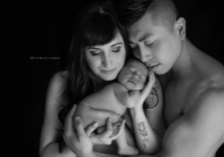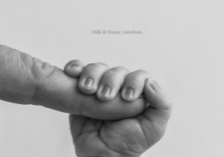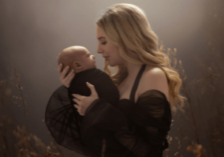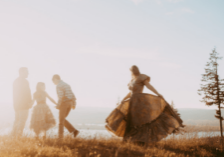Countdown to Success: Using The Rocketship Blueprint to Propel Your Photography Business Forward with Senior Photographer Sean Brown
Does your photography business ever feel like it’s just too “heavy” to maintain? Is your messaging lacking a clear strategy that sets you apart from the competition? Are you struggling to attract your ideal clients on a consistent basis?
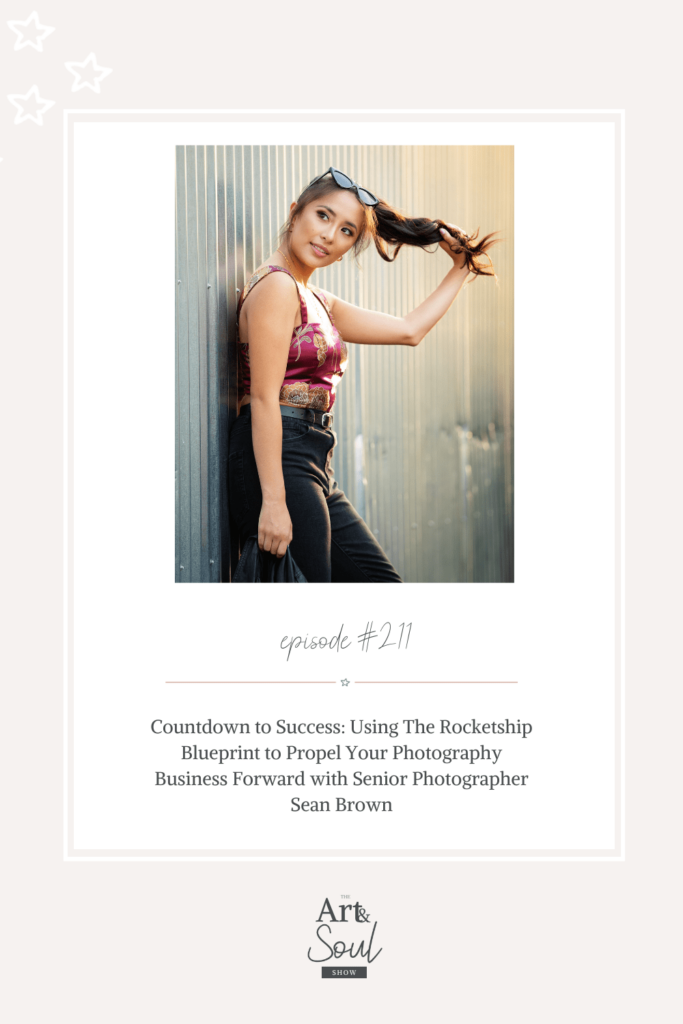
In today’s episode, I’m interviewing Sean Brown, a professional senior photographer and educator who has mastered the systems, strategy, and authenticity required to launch a successful photography business.
We cover so many important points from taking a leap of faith, to laying the foundation that’ll allow you to scale your business, to why the work that we do can be life changing for struggling youth. If you want to set your photography business up for long-term success, then this is the episode to help you do it!
So, get cozy, grab your notebooks, and tune in. I’m rooting for you, my friends.
What’s in this episode:
- [02:53] Sean’s leap from the medical field into photography
- [10:12] The power of branding and taking your business seriously
- [16:36] How showing up with authenticity can help you attract more clients
- [26:10] The 3 phase launch framework and where photographers get hung up the most
- [38:23] The messaging blueprint for successfully promoting your business on social media
Tune in to this episode to learn how leveraging systems and authenticity can help you scale your photography business.
SUBSCRIBE: Apple Podcasts | Spotify
Resources Mentioned
Shoot for Success Photography Podcast
Follow Senior Photography Education on Instagram
Meet Sean Brown
Sean Brown is based in the beautiful Pacific Northwest and is a high school senior photographer. After going to college with the intention of being a cardiologist, he gave it all up to pursue his dream of having the freedom to live the life he wanted through photography and hasn’t looked back. Fast forward ten years, he exclusively photographs high school seniors and runs a high end studio that caters to clients who want to stand out in their images and want their unique personality to be captured too. He loves the excitement and enthusiasm that seniors bring to their photo shoots and feeds off this energy during each of his sessions. Sean has been asked to speak at conferences around the country and loves helping other photographers build their dream photography businesses by giving them the tools that are necessary to take it to the next level by going beyond the one-size-fits-all approach to business.
Connect with Sean
Add Sean on Snapchat
Did this episode provide you with a roadmap for launching or scaling your senior photography business? Check out this episode Spotlight on Senior Portraits: Cultivating Confidence in Teen Sessions with Ariel Perry that shares how another photographer started their career!
Transcript
[00:00:01] Sean Brown: If it’s something that’s a desire for you, take that leap. Because even if it’s something that you think you should be doing, doing what you’ve always done, or keeping in your career path, or not going for it because you’re afraid of what your friends or family will say, or if you fail or whatnot, it’s you don’t know that. What if? And that’s really what drove me as well. What if this photography thing works? [00:00:24][22.6]
[00:00:27] Lisa DiGeso: Welcome to the Art and Soul Show, where we dive into heart opening chats on photography, business, life and that messy in-between. I’m your host, Lisa DiGeso, a mom, a photographer and entrepreneur, and I’ll be sharing honest conversations and advice for photographers with insight on mindset, entrepreneurship, and creativity. The goal of this podcast is for you to be able to gain insights and strategies that will get you real results. Because let’s face it, having a photography business can be lonely, but it doesn’t have to be. This is the place you can go when you need a boost of encouragement, a kick in the pants, and inspiration to pick up your camera. This is the Art and Soul Show. [00:01:10][42.3]
[00:01:11] Lisa DiGeso: Hello my beautiful friends. Welcome back to the show today. I’m super excited to dive into today’s conversation with Sean Brown. Sean is based in the beautiful Pacific Northwest and is a high school senior photographer. After going to college with the intention of being a cardiologist. He gave it all up to pursue his dream of having the freedom to live the life he wanted through photography, and hasn’t looked back. Fast forward ten years. He exclusively photographs high school seniors and runs a high end studio that caters to clients who want to stand out in their images and want their unique personality to be captured, too. He loves the excitement and enthusiasm that seniors bring to their photo shoots and feeds off his energy during each of his sessions. Sean has been asked to speak at conferences around the country, such as imaging USA, sync, the Push Conference, and loves helping other photographers build their dream photography businesses by giving them the tools that are necessary to take it to the next level. By going beyond the one size fits all approach to business. I was so excited to connect with him. I think it was mentioned in one of our student groups that they were dying to have him interviewed and part of our Milky Way family, so I reached out and we’re so excited to connect. So welcome, Sean. [00:02:25][74.1]
[00:02:25] Sean Brown: Thank you so much for having me, Lisa. I’m really excited to be here. And I think it was just the stars aligning, the perfect timing of being mentioned. And then also, yeah, getting on the podcast as well. So thank you so much for having me. [00:02:35][10.0]
[00:02:36] Lisa DiGeso: Like you literally, I like it was funny because I looked at your website. It was mentioned in the group. I looked at your website. My business partner looked at your website. And literally that afternoon you messaged us. [00:02:46][9.8]
[00:02:46] Sean Brown: That’s hilarious. Yeah. [00:02:47][0.9]
[00:02:47] Lisa DiGeso: It’s wild. [00:02:48][0.4]
[00:02:48] Sean Brown: Sometimes it’s just meant to be and it’s little and, you know, idiosyncrasies like that. Yeah. [00:02:53][4.6]
[00:02:53] Lisa DiGeso: Yeah, it just blows my mind. Sean, can you tell us who you are and what you’re super passionate about? [00:03:00][6.2]
[00:03:00] Sean Brown: Yeah. So I’m like, you said it. I think you summed it up even better than I could have. So I’m Sean Brown, I’m a high school senior photographer in in Portland, Oregon. And like you mentioned, I never thought that I would be doing this and just something that I happened to fall into. And years after running, high end, successful senior photography studio. I still do that. But I also have really transitioned into helping photographers build thriving senior photography businesses. Most importantly, having that time flexibility and freedom, which a lot of photographers think, hey, well, what you’re going to do is you’re just going to take a bunch of pretty photos that’s going to drive a great business for you. And they find out that there are there are some more things you have to do business, marketing, all that stuff. And so I’m really passionate about helping photographers fine tune their business, make it actually profitable, step out of the starving artist mantra and step into being the business owner that they can be. [00:03:51][50.5]
[00:03:52] Lisa DiGeso: I love that it’s not always the case. It’s like like I really fell into my photography business. I had my son and I’m in maternity, newborn photographer, so really fell into that genre with zero business. Like I just was like, I just want to take photos. And then people started asking me, and this business happened and I got it kind of got swallowed up with it. So I’m sure you that you find that too. I want to circle back, though, and I want to talk a little bit about you had an initial career path of being a cardiologist. So what sort of made you have that shift and find your passion for photography to, like, make that leap? [00:04:25][33.9]
[00:04:26] Sean Brown: Yeah. Well, and like you said, I think every photographer, for the most part, there’s nobody that I think wakes up day one and is like, you know what I’m going to do for my dream job? It’s going to be photography. We always are kind of told throughout our whole lives that you have to go do a certain career that’s going to be what makes you successful. Or we see that certain careers like, you know, lawyer or doctor, kind of the careers that are sought after, that’s that’s what’s going to make you super successful. And so whether that was kind of society or whatever it was, that’s kind of just the natural career path that I went on. And it was something that I loved doing. So I loved the sciences. I loved the idea of being able to work and and help people. But with photography, I fell into it. It started with just literally being in college, coming back from from college in the summer. And this is a couple people that I knew from high school were like, hey, can you take senior photos of me? And of course, I didn’t know how to focus my camera didn’t know what a 51.4 meant, except that the. Ground could be blurry. Also didn’t know that that meant the whole subject was out of focus. If you didn’t nail the focus exactly and then really just fell in love with the connection. Much like many photographers, with the clients that you have, the energy, the excitement that they bring. And it was something that as I went back to to college, it was something that I found, I kept going back to. It was spending those late nights in the dorm room, you know, at your computer, refining your website until two in the morning or, yeah, figuring out what’s this new editing technique and all those things. And deep down, I knew that I needed to do this, and it was going to take a leap of faith because I was essentially presented with two paths. The first path is what I call the safe route, which is you can do what you know works. You can go to medical school, you can stay in your 9 to 5 job. You can have a clear path forward, which for me was residency. And then or you go to medical school, I should say that you do residency and then you do, you know, whatever else doctors do. You stay in a hospital until you basically retire. And what I saw with that path was, yeah, it was quote unquote, the easy path forward. But it also meant giving up the freedom and flexibility that I was starting to see with photography. And much like probably many of your listeners, that’s what they crave at the end of the day. Is being able to be your own boss, being able to make your own schedule, be at home with your son or, you know, travel. We were talking before we we started the podcast. Have you been able to travel the Oregon coast and how many jobs is that really possible with? And so it wasn’t necessarily that I couldn’t or I didn’t want to do the medical route, but it was something that I wanted more. And that sometimes the scariest thing, which is taking the full leap into something that’s unknown, also yields the best results. And so fast forward a decade later, and I’m really grateful that I that I took that leap. And really, that’s what I encourage other photographers to do as well, which is if it’s something that’s a desire for you, something that you want to do, take that leap. Because even if it’s something that you think you should be doing, you know, doing what you’ve always done or keeping in your career path or not going for it because you’re afraid of what your friends or family will say, or if you fail or whatnot, it’s you don’t know that. What if? And that’s really what drove me as well. What if this photography thing works? What if it does start creating the life that I want? [00:07:57][210.5]
[00:07:57] Lisa DiGeso: I love that because I think often we’re so hard wired of that natural inclination of like, what if I fail? And like, what are people going to think? What’s my family going to think? And if we change our mindset? Or like, what if I succeed? Like, what if I totally kick ass and win this thing? Like, what does that feel like? And you go and you approach it with such different energy. I love that I have to ask, what did your family say? [00:08:19][21.8]
[00:08:20] Sean Brown: Yeah, I think my mom was a little bit, caught off guard to say the least, when because I was signed up for the mCAT, which is the medical schools admission test, to basically help you get in. And my mom was we had already registered and everything. And I go, you know what? It’s about two days before the test, I go, I don’t think I’m going to take it. And she’s like, okay. She goes, this is an interesting decision. But they were super supportive. So I was very grateful that they were. And so I’m not sure that that’s something that everybody has. But I hope that if you found the right partner, you have the right family, that they would be supportive of you at doing that endeavor. But there’s always somebody who’s in the back of their mind going, this person’s crazy. Like, what are they doing? They have so much going for them, and now they’re turning it down to pursue, you know, something that people do as a hobby and they’re trying to do this full time career out of it. And so there’s always that kind of back of the mind going, all right, well, we’ll see if this works. But at the end of the day, you ultimately are going to be around people that support you, who encourage you. And so very, very grateful that my family was was willing to do that. [00:09:26][66.5]
[00:09:27] Lisa DiGeso: I love that my dad still has no idea what I do, which I think is hilarious, like. I because I’m a photographer, obviously, but I also have like run an online platform, I do a podcast, all the things, and he just doesn’t have a clue. It’s it’s the funniest thing. And he still brags about when I was in college and I was a server, there was one time I made $500 in tips, and he thinks that is his brag story about me. [00:09:53][26.5]
[00:09:54] Sean Brown: And you’re like, look at what I’ve all I’ve done. Yeah. [00:09:56][2.0]
[00:09:57] Lisa DiGeso: When I was 21. And no. [00:09:59][2.1]
[00:10:01] Sean Brown: But those are the things too. And it kind of shows that no matter how big the accomplishment is, that you always have somebody in your corner, right? That’s absolutely right to that too. [00:10:11][10.4]
[00:10:12] Lisa DiGeso: Yeah. My parents are just like, they’re hilarious. I love it and they’re totally rooting for me. So when it comes to high school seniors, so you kind of explain how you found your niche when photographing your friends. So how did you kind of turn that in? To your business. [00:10:27][15.0]
[00:10:27] Sean Brown: Yeah. Great question. And that’s something I see a lot of photographers struggling with too, is they’re like, hey, we want to do this. How the heck do we turn this into a full time job? How do we turn this into a business? And that was something that, for me really came down to a couple of things. And the first was handling it like a business is the first step of the process, where one of the things I noticed myself kind of falling into a pattern with, and a lot of photographers that I mentor coach, kind of experienced the same thing, which is they just kind of keep doing the free shoots or the portfolio building because they need more experience, or they’re kind of waiting for somebody to tell them, all right, now, you have been granted the ability or the right to be a full time professional photographer or even just part time professional photographer, and they’re always kind of waiting for somebody to tell them, hey, that you’re you’re good to go, right? They’re waiting for some certificate or some diploma or some accreditation or whatever it may be, and it really comes from within. Yeah. I’m saying, hey, I’m not going to do this. Just spending my time giving this incredible service to you all, because that’s what we do as photographers. Not very many people are able to say, hey, we are truly making a difference in our clients lives. Where I have individuals that I’ve worked with, with eating disorders or self-esteem, and for them to be able to walk away from the session saying, hey, we had such an incredible, life changing experience where my self confidence grew. I was able to see myself, how others see them, and for you to not give that gift to them because you’re simply just kind of not taking it seriously yourself, well, you’re actually doing your potential clients a disservice as well. And so it really stems from getting your business right. How do you want to serve your clients? Is are you going to make sure that you’re pouring into them? And I chose to go kind of the more full service route where it was very all inclusive in terms of everything they’re getting products. Yeah, hair and makeup really the full session experience. And so I was very clear on what that path forward needed to be and what that business wanted to look like. And even if I wasn’t sure how to get there, I was going to figure it out. And when I figured out that that’s what I wanted to do, it really came down to the marketing and branding. How are you then going to brand yourself as the go to senior photographer? And for many photographers, we often see this where chances are, if you’re not looking at a ton of clients, what this looks like is you think, hey, what I’m going to do is I’m going to be the generalist photographer, because the more clients that I appeal to, the more clients that I’m going to get, right. And we kind of see that this doesn’t always work like that, where what happens is we say, well, I’m going to be the newborn, and I’m going to also be the wedding and the maternity and the engagement and the low man and the senior photographer. And I know Canada doesn’t really have senior photos, but insert whatever genre it may be. And what we see is that this really dilutes the ability that you’re able to stand out in your market, because when people are wanting to invest, when they want the best of the best, they’re not going to the generalist, right? When we have a plumbing issue, I’m not calling the dude who put in some turf in my yard or whatever manure in my yard to come fix my pipes. I’m calling the plumber to fix the water leak leakage that’s come in through the roof or whatever it may be. And people in photography do the exact same work if they’re looking for the go to newborn or wedding or senior portrait photographer, they’re really looking for somebody who does that, who has shown their expertise. And so. Well, I dabbled in families, second shot, a couple weddings. I realized quickly that that was not for me. I honed in on that niche of seniors, and by branding myself as a senior photographer, it was incredible that more people actually came in through the doors because they saw you. They see you as the go to photographer for your particular genre, your niche, and that in and of itself builds a lot of credibility with your clients. But it also, more importantly, shows that you’re dedicated to making sure that their portrait experience in that particular genre is really the best that it can be. And so that was really a huge game changer. And where I see a lot of photographers kind of go astray is they wonder why it’s not working. And it’s typically because they’re spreading themselves thin in a lot of different areas and in hopes that they bring in clients rather than, hey, what’s my business model? What is it going to be? How am I going to serve my clients? And more importantly, how am I going to make sure that that message is presented to my clients and that really comes from that brand aspect. [00:15:15][287.6]
[00:15:17] Lisa DiGeso: I love that. I think you touched on something that really was like, oh my gosh, huge light bulb for me. And because I have a 14 year old son right now and I’m just, you know, watching him this is such like between 14 and 18 is such an impressionable age. And how you touched on, like, the eating disorder and how these kids, they’re still kids see themselves and how this experience with you can be such a life changing experience and how it can set them off on a different path for their life, too, just because of the experience that they’re having with you. And I just oh my gosh, like, right. And and parents love to spend money on their kids. [00:15:55][38.2]
[00:15:56] Sean Brown: One in which parent is going to sit there and say, yeah, we don’t actually really want to remember this moment in our child’s life, especially before they’re heading off to university and off on their life. And it’s such a transitional moment from childhood to adulthood in a lot of ways, where they’re never going to be that same person they were in high school. And what an incredible gift that you have as a photographer to be able to capture that for your families. And we see the same thing with with newborns and weddings, kind of those milestone sessions. Yeah, where you’re never going to get that time back. So it’s kind of that built an urgency even to work with you as well, where it’s, hey, this is the time to really remember those moments. [00:16:35][39.2]
[00:16:36] Lisa DiGeso: Yeah, I love that so much. Oh, so good, so good. So I want to talk a little bit about the energy and how, like a teenager’s energy is going to influence how the session goes, because I’m sure you run across some that are super introverted, some that are extroverted, some that are, you know, watch who maybe way too much Instagram and try to pull real sexy. And it’s kind of know me, not the vibe that you’re going for. So I want to talk a little bit about how that works with your creative process. [00:17:04][28.0]
[00:17:05] Sean Brown: Absolutely. Yeah, I think that’s a great question too, because one of the things that I always tell photographers is at the end of the day, you’re going to attract the clients that are right for you if you’re authentic with who you are. And so many photographers kind of ask this question of how do we attract all these incredible clients? How is it that we bring in this energy, the people that are enthusiastic and hey, if if they are introverted, you know, how do we kind of pull them out of their shells so that they’re having a great session experience with you? And I think that a lot of it comes down to who your been on your social media, in your website and and in your brand. It kind of all boils down into into that brand element. What is your brand known for? And so for me, a big part of that was, well, you know what? I’m sick and tired of attracting the clients who don’t value me, who don’t want to truly invest in me or who get to the session. And they’re like, dude, this guy is off his rocker. Like he’s crazy. We’re doing like, TikTok dances during the shoots we’re doing. He’s like, got his whole video crew and all that stuff. Like, that’s not for me. But when you step into who you are, all of a sudden you stop attracting those clients because they almost weed themselves out for you in a lot of ways. Yeah. And so when photographers are like, hey, how do you kind of manage all this energy? Or how is it that you’re working with all these different individuals? And the the real answer to that is we kind of do that before the shoot even starts with what we’re putting out on social media, whether it’s via Instagram Stories that we’re creating, the vlogs that we do. So this is like essentially medium to long form video content, where our clients really get a chance to see what it’s like to work with me prior to even emailing the studio or anything like that. And so with that, you also when you put out your energy, you attract the people that naturally resonate with you. And what a beautiful thing that is to say, hey, we’re attracting the clients that we really want to attract just based on who we are. And so yeah, we get the introverted clients. But, most of our clients are really outgoing, and I think it’s just kind of reminiscent of the entire senior industry where you kind of say, go jump up on this parking structure or something like that, and they’re like, perfect. Which part of it? And we don’t see that with a lot of other genres, but they’re very open and willing, and it comes down to a lot of trust with the photographer as well. So as long as they know that you have some sort of vision and you’re, again, that’s part of your creative process of, hey, I’m going to trust you with doing some things. You have to trust me as well. And as long as you kind of build that rapport, especially in the beginning, and that’s kind of the whole, you know, client inquiry, onboarding type process of getting to know each other, those types of things. But it really comes down to do you stay true to who you are at the end of the day, are you going to make sure that you’re staying there and saying, hey, this is who I am. This is how we achieve the results. You hired us for a reason. So this is just part of our crazy process of how we get there. And I think when you’re open and transparent with not only who you are, but also. Communicating with your clients, especially if there’s any hesitancy or there is any kind of introverted tendencies, you’re going to get a lot better results for your clients as a result of just being that transparent, authentic individual. I love that answer your question a little bit more about that. Yeah. [00:20:32][207.7]
[00:20:33] Lisa DiGeso: Yeah. No, it totally. And then I actually have another question because I often we’ve heard this in our groups. What if you don’t know who you are as a photographer. You don’t know your brand. You don’t know your style. You don’t even know who you are. So how do you show up as that person? Like, do you have any advice on unpacking that? [00:20:50][16.9]
[00:20:50] Sean Brown: Yeah, I think this is I think that’s kind of like Lisa, you hit on like the creatives struggle, which is like, how do I find my brand? How do I find who I am? How do I find my style? All those types of things kind of get boiled into that. And for me, I think of this a lot as so I was a track runner in high school. Yeah. And one of the things in track is you have your own lanes or you if you’re not. I was a distance runner. So basically we all started together and then we kind of merged into this big old hodgepodge of a, you know, sweaty, messy pile, right, of, of runners. But you’re never running against somebody. You’re always running against yourself. Yeah. And I think that this is where a lot of photographers go wrong, where what they do is when they say, well, I don’t know who I am, what tends to happen. And this is even when you’re starting your business, when you’re on your business journey, what you do is you look around at all the other photographers, you find somebody who’s successful in the industry and what you say is awesome. What are they doing on their social media? Yeah. What does their website look like? What’s their style of photography. And what happens is we try to emulate it. We say, hey, they’re seeing signs of success, so let’s do that too. And if we’re even able to replicate a fraction of what it is that they do, we’re going to find success as well. Yeah. And what happens is we end up diluting who we are, because what we’re trying to do is we’re trying to inject somebody else’s business into our business DNA, which does not work. And you’ll find that you may see success for a year or two. But what happens when that photographers shut their doors and now all of a sudden you’re going, where do I go from here? I have no idea. And so what you have to do is if you’re struggling with that, I say it’s like a lot like a track race where you have to be focused on pushing yourself to be 1% better. And so the way that you do that and kind of hone in that focus, think of like a horse putting on the blinders during a horse race where again, they’re not worried about what the other jockeys are doing or what the other horses are doing, but they’re worried about, hey, how are we getting to the goal? How are we going to get from start to finish as fast as we can, or run the best race that that they can? And the reason that the horse has put those blinders on is so that they don’t get spooked or distracted by those other horses. And for business, that’s a lot like us going to other photographers, Instagrams or websites and saying, this is what I want to do. And we again, we get spooked, we get distracted in our business. We talked about this with my coaching students the other day, kind of this shiny object scenario where we see something, we chase after it, and what happens is we, over time, think that we’re moving in the right direction, but we never get back to who we truly are. And so if you’re stuck on this, what I love to do is kind of this Instagram test. And a lot of photographers, especially when we get into a creative rut or we get into a place in our business where ultimately we don’t know who we are, we have no idea what our style is or what our voice is or anything like that. Look back at your Instagram and go through and and look at which posts just make you happy. Genuinely. Just light up something inside of you. And what is it about those posts? Or what is it about those images that allowed you to feel creative, to feel like you connected with a client? And what I had to do early in my business is I found myself getting trapped into kind of that, not having the blinders on, looking at other photographers. And so for me, it was really important to to put those blinders on and go back to what is it about my work that made me happy? What is it that I loved about connecting with those clients, that I had a great impression or a great experience with, that they had a great impression on me and I had a great impression on them. And what is it that you need to do to replicate that? Because once you’re able to do that, you stop looking at others. And the more that you focus on what your internal intuition is telling you to do, the more that you’re able to see who your voices. And don’t worry about what others think. It sounds so cliche, but it’s so true like it’s true. Nobody else is teaching you how to run your business. It’s ultimately. Up to you of how you’re presenting yourself to your clients. What’s your voice if if you’re extroverted and want to, you know, show your clients an amazing experience by being a little bit goofy and silly on sessions, do that because again, they’re going to be drawn to you. It’s the minute you start trying to replicate that again, you lose sight. You kind of lose that focus of building the business that’s right for you, and trying to emulate and recreate something that’s not going to work for you based on other people’s successes. [00:25:44][294.5]
[00:25:46] Lisa DiGeso: Yeah, I love that. Have you read the books? Feel like an artist? [00:25:48][2.2]
[00:25:48] Sean Brown: I have not, it’s on my list to read. [00:25:50][1.9]
[00:25:50] Lisa DiGeso: Oh, you got to. It’s a short read, but it’s like it really is about you are the some mash up of everything that you’re exposed to. So it’s like, expose yourself to like a whole bunch of different things because you just become that incredible soup of like, everything. [00:26:05][14.4]
[00:26:05] Sean Brown: What’s kind of like that? Saying like, you are the sum of the five. Yeah. Closest people around you, right? [00:26:09][4.1]
[00:26:10] Lisa DiGeso: Yeah, yeah, yeah, definitely. Check it out. It’s such a good book. So I want to dive into your rocket ship launch framework. So can you walk us through the three phases and how they help photographers scale their portrait businesses? [00:26:22][12.3]
[00:26:23] Sean Brown: Yeah, absolutely. So and to kind of go into where I got the idea of the rocket ship launch framework is when I was looking at, okay, what actually works for people building their businesses, it really came down to what, Rocket Ship Company or, space exploration, like now we’ll call it. Yeah, like NASA, basically what any space exploration business or company does, which is they have a series of checklists that they have to go through in order to make sure that their launch is successful. And so for photographers, this really boils down into three things. The first is the systems check. So hey, before you’re going to work on scaling your business to the next level, are you actually ready to do that? Right. And a lot of photographers skip this step, and then they get to kind of the next stage of the business or the next stage of the countdown where they’re all of a sudden going, why aren’t things working for me? And they skip that step. So that’s that first one is that systems check and we kind of dive into all those. The other is this kind of the T-minus countdown where it’s like you’re getting ready to launch. Let’s make sure every single final last check is in place. But more importantly, this is the most vital stage where before you kind of actually are going to shoot your business upwards, you have to make sure that’s in check. And then that last one is really that ignition sequence where it’s go time, you’re launching your business, you’re actually going forward and putting everything into check. And that’s really where you see people, taking their business, we’ll call it the Foundations. Yeah. And really building upon that so that you can have an amazing, successful, thriving photography business of any genre, but more importantly, one that’s going to work year in and year out rather than just kind of this, this flash in the pan. Yeah, experience, so to speak. [00:28:15][111.6]
[00:28:15] Lisa DiGeso: I love that. Which which face do you find that photographers get hung up on the most? [00:28:19][3.6]
[00:28:20] Sean Brown: I would say it’s really that systems check phase. Yeah. And what that systems check phase is, is think of this as if you are going to take your business to the next level. Are you ready to handle that number of clients? Yeah. And where I see a lot of photographers kind of make this mistake is they are good with what they do at their current stage of their business. And they say, hey, you know what, I have ten clients this year. I would love to photograph 30 clients or 40 clients. And all of a sudden they say, we’re just going to do exactly what we’ve always done. And where the systems check phase really comes into play is asking yourself, if you had 30, 40, whatever number of of clients or sessions you want, is your business equipped to handle that? Yeah. And where a lot of photographers fail is that they say, yeah, I can do it, but they’re still doing things like sending out emails by hand. Yeah. So they’re every single client, or maybe they don’t have some sort of virtual assistant who’s helping them handle inquiries as they come in, or maybe even they’re trying to do all of their social media just kind of on the fly. And they don’t really have a, a system or strategy. Or maybe what this even looks like is they don’t have any systems at all, and they’re just kind of going from photo session, importing the cards, hoping they edit the sessions and there’s no real workflow. Yeah. And what happens is as you try to grow your business, that works for a certain period of time, we call this kind of a grunt work. That’s where you can kind of put in as much work as you want, but if you don’t have those systems in place, what’s going to happen? It’s only a matter of time before you drop the ball on a client. And what happens is you’ve created likely this incredible client experience. But as soon as you start dropping the ball, that client experience deteriorates. And now you’re. Not providing the same client experience. And so for those photographers who are looking to grow their business, we have to ask, are you doing the fundamentals? And it’s kind of like an I don’t know if you like played sports or anything growing up. It’s like all the people in basketball are like, hey, we want to like, learn how to slam dunk and like shoot three pointers. And they’re like, nope, you’re going to dribble the ball for like five hours a day until you get it down. Yeah, but it’s because that’s what you need to do and you can’t progress to the next stage of your business, of the sport that you’re playing until you do that. And so these are things like taking the leap of faith and hiring and outsourcing and delegating, automating, all of those processes, kind of the D&D model, the delete, automate, delegate. Right. That is this something that you can delegate? Is it something you can automate? And if not, you have to just kind of, yeah, get it out of your business. And a lot of photographers fail on that stage. And then they wonder, why is it that the business feels heavy? Or why is it that they hear that photography can be so easy, yet they’re they feel like they’re drowning and then those types of things, and it’s really understanding and listening for the signs from other photographers of why that’s happening. And usually it comes down to kind of that not having your systems in place, which ultimately is going to catch up to you and down the line. [00:31:34][194.2]
[00:31:36] Lisa DiGeso: For me, I would get bogged down and I still, you know, full confession, I still sometimes do is I love to overshoot. And then so I get overwhelmed with all of the choices. But then because I love editing and I feel like editing is actually, you know, it’s pretty easy for me. I get it right in camera, I polish it, it takes me, you know, not too long. And so I and delivering more because I feel like I should because it’s easy for me. Which is nuts, right. Because I don’t do that I then I devalue what I’m giving because I’ve over delivered one. [00:32:10][34.6]
[00:32:10] Sean Brown: Now it’s only getting even harder with things like eye editing. We talk about that a lot where it’s even, you know, I catch myself doing that too. So where it’s like, oh yeah, it’s, you know, $0.07 an image. I’ll just, you know, what’s ten more? It’ll save me some time calling. But you’re exactly right. It devalues. Yeah. At the end of the day, what we’re delivering to our clients. [00:32:29][18.3]
[00:32:29] Lisa DiGeso: Yeah. And I just, I struggle and I have struggled with this for 15 years. Like. And it’s like I promised 25. And somehow I still managed to creep it up to like 100. And then I convert them into black and white and I’m like, okay, least. So like it’s something that should have taken you an hour is now taking you 4 to 5, like, what are you doing? You know, and it’s because I won’t, or I like to rebel against my own systems. And I know that our photographers are often little rebels, too. So do you have any advice on, like, bossing yourself? Stop doing it. [00:33:03][34.2]
[00:33:04] Sean Brown: Yeah, I think, a great kind of peace. I don’t know. We’ll call this a phrase, word of advice, whatever you want to call this, which is that, basically, systems create freedom. And one of the things that we see with a lot of photographers where they’re like, you know what? This is taking me way too much time. It’s not giving me the results that I want. My clients don’t value it as much, whatever it may be. We look and we say, well, why is that? And chances are it’s because you had a system in place and you broke it, or you don’t have systems in place yet, which, you know, then it’s time to get some in in hand. But with photographers, we’re we’re entrepreneurs. And something that entrepreneurs don’t really like is being told what to do, even by ourselves. And this is so, so kind of reminiscent of every single creative out there where they’re like, I would say, for most of us, we are fly by the seat of our pants to an extent, myself included. And I would consider myself a fairly organized, yeah, kind of Type-A person. But when we have any creative juices flowing in our system, our brain is going off in, in under different directions. And so what we often do is we say, you know, what that system we had in place, it’s fine. It will be okay. We don’t have to follow it for this time. And what we do is we fast forward two weeks and we’re like, why the heck did I tell myself that I have to do this? Why did I break my own rule? And we’re kind of in that hole. And so for photographers who are like, you know what, I don’t like being bossed around. Take it to the extreme and say, okay, even if you don’t like being bossed around and it’s by yourself and you have these systems in place for a reason, what is it that happens as a result of you breaking those systems? And typically there’s some sort of memory that comes to mind where you’re going back and you’re going, oh yeah, yeah, I did do that for that one client last time. It resulted in a lot of headache, a lot of stress for me. Okay, perfect. I’m not going to do that. Yeah. And remember too that at the end of the day you’re building a business and your business is not. Your baby. As much as we want to say that it is, our business is a machine, and what it’s designed to do is it’s designed to bring clients in. Designed to allow you to work with them and ultimately produce a profit at the end. And when we treat it like a baby, our time and our attention and our effort is always going to be tied to that business. And chances are, you didn’t start your business so that you could spend more time in it. You started it so you could spend more time with your family, your friends, traveling, being able to have a little bit time for yourself where it’s not glued to the computer, where you’re running to fix your kid dinner, and then all of a sudden you’re running back because you have another session date. Yeah. And so with that, you always have to keep in mind that the only way that that business functions is with a little bit of delegation, a little bit of outsourcing, but more importantly, sticking to those systems once that place to so take it to that extreme, what is it that I’m going to potentially lose out on? And what is this going to create as a result of breaking that system? And that has really helped me, along with a lot of the photographers that I coach, kind of say, okay, you’re right. Let’s talk some sense back into ourselves rather than kind of jumping off the deep end. [00:36:23][198.6]
[00:36:24] Lisa DiGeso: Yeah. You know, it makes perfect sense. And like when you nail on the head because because I’ve been doing it so long and over delivering. I have a client who’s having her fifth baby. And so because I have over delivered on the four previous, I feel like now I’m obligated to. [00:36:39][15.5]
[00:36:40] Sean Brown: She’s expecting it too, right? Yeah. We built it into part of the. [00:36:43][2.6]
[00:36:43] Lisa DiGeso: Experience cause I built that. Right. Yeah. [00:36:45][1.9]
[00:36:45] Sean Brown: And so we have to think of that as photographers too, is what’s the ripple effect. [00:36:48][3.0]
[00:36:49] Lisa DiGeso: Right. Or maybe she’s told her friends like, yeah, she’s expensive, but she gives so much. Right. So it’s great. Like, no, that’s not what I want to do. Right. Yeah. And actually to say another about the importance of having systems is I had this great system of how I, you know, client inquires on my website, they get an auto sent their information, they can book online. It’s all automated. Then I started taking a lot of inquiries coming through Facebook. Oh did it go into my CRM. No. Did I forget about the session. Yeah. Don’t do that. Follow your systems. [00:37:27][37.9]
[00:37:28] Sean Brown: Yeah. It’s so important. And it’s like a lot of my, my students will ask me. They’re like what do you do when you get a Facebook DM and Instagram direct message. And I go, they get a link right to my contact form, and if they don’t fill it out, that’s honestly that’s on them at that point. But there are the systems in place for a reason. It’s for my sanity. And if I’m not saying you’re not going to be saying during your session, you there is one like to say. [00:37:51][23.3]
[00:37:52] Lisa DiGeso: One of the best business decisions I ever made was putting on the autoresponders on to like all my social media where it funnels them to where they need to go. So I’m not having to have those conversations. There was huge time saver and it’s like, it’s so important. As you know, we need to evaluate where we’re leaking our energy and our time. And I think that you get stuck in all that grunt work that you kind of forget to even look at that. [00:38:15][23.7]
[00:38:16] Sean Brown: Yeah, that time energy conversation, that’s a whole. [00:38:19][2.5]
[00:38:19] Lisa DiGeso: I know, another. [00:38:19][0.4]
[00:38:20] Sean Brown: Podcast topic I know. Yeah, yeah I know. [00:38:23][3.1]
[00:38:23] Lisa DiGeso: So I want to talk a little bit something that when you’re on your intake phone you talked about the Messaging Blueprint. So can you share a little bit about what that is. [00:38:30][6.3]
[00:38:31] Sean Brown: Yeah. So the messaging blueprint is really for the photographer who doesn’t have a social media we’ll call it strategy or their social media strategy looks like a lot of other photographers, because what they’ve done is they see a lot of photographers doing this, which is posting beautiful image or sneak peak after sneak peak. And they think that’s going to be my social media strategy. And what we find is that when we only do that, it goes back to the question of, well, why am I not booking any clients? And it’s because you’re not actually doing the key things, which is how are you communicating what it is that you do? Why is it that you’re different? And most importantly, also who who are you? And we kind of talked about that in the beginning of this episode. And really, the messaging blueprint is really designed to touch on all three of those, where it’s to take your client through overcoming their objections, showing how you’re going to solve the issue, and then, most importantly, how are you going to make sure that they feel comfortable working with you? And that kind of comes back to that. The who are you? And so we kind of break this into three phases. The first one I like to say is, is sharing is caring. And it kind of comes down to like, hey, if you’re not going to tell your clients what you’re doing because you’re afraid that a competitor is going to steal your amazing idea, well, chances are your clients aren’t going to know about that whatsoever. And then we also want to go a step further. Once you’ve shared what is it that you do? You also need to share the purpose behind it. Why is it that you actually do this in your business? And most importantly, we need to do the third phase, which is keeping it client centric. And so everything that you post is. And because, hey, it’s getting more likes or it’s getting more feedback on on Facebook or Instagram or whatnot. But it’s how is this serving your client? How is this going to benefit your client? So we kind of break those three phases. The sharing is caring the purpose. And then that client centric aspect and that in and of itself forms that messaging blueprint. We can kind of dive into into that in detail if you want as well. [00:40:37][126.7]
[00:40:38] Lisa DiGeso: Now I want to ask because some there’s a photographer that I know that maybe has let their photography Instagram sort of to the wayside. What would advice would you have about bringing that back? [00:40:51][12.5]
[00:40:52] Sean Brown: Yeah. So it depends on on the person. Right. And sometimes we all need that little social media detox, so to speak. But one of the things to that that I started doing in my own business was I found myself being very glued to my phone. Yeah. And I think a lot of photographers feel like social media has to be something that’s really heavy. That’s something that’s really a drain to them. And it doesn’t have to be if we don’t make it that way. Right. And one of the things that has really helped me is being, again, going back to those systems. Having social media scheduled out right now, it kind of comes down in that messaging blueprint. And and part of that is also cycling through what is it that makes you different and, and all those things. And what I’ve been doing over the past couple of years is mapping this out, especially in my in my slow seasons of having that, where the marketing strategy is actually the most important, because it’s not when you’re booking clients, it’s really when you need to book clients that comes into play. And it’s been a combination of of scheduling it out, as well as outsourcing and really allowing Vas to help you and step in where you’re not necessarily handing over the reins, because that’s really dangerous to do, especially as a solo business where all of a sudden it’s not your voice being carried through in your messaging, but giving them tools and systems. So one of the things that I do is, will write the captions will write kind of the copy and stuff, but they’re doing all the creative. So they’re taking, whether it be like a Canva or Photoshop template or something like that, and they’re just inputting everything, grabbing photos from a Dropbox, and then they have this beautiful carousel. And when we say perfect, schedule it for this day, put this caption. And they’re kind of doing all that heavy lifting, the stuff that feels heavy for photographers. And when we’re able to kind of step away, we forget that we’re even posting. In fact, yeah, this whole last week, I was actually down with a little stomach bug and I had like three posts, got on Instagram like I forgot I even had those scheduled. And so it’s a really beautiful thing where we’re able to kind of take that weight off of ourselves. And so when somebody steps away from social media, we typically see that it’s a result of them feeling like it’s either not working or and that’s a result of not having the right strategy in place, or that it feels heavy. And it’s kind of that result of not having the systems in place or being willing to let go. Yeah, and you’re always going to feel dragged down if you’re not willing to allow other people to help your business because, yeah, no successful business in the history of the world has ever been built by one person, right? Yeah. Tim Cook isn’t sitting there building your iPhone. He’s got a team of helpers. [00:43:32][160.0]
[00:43:32] Lisa DiGeso: Oh, really? I love that. Yeah, I know it’s funny because I took a sabbatical for a year, and I’m. I’m still kind of like, tiptoeing turned aside if I’m going to restart my photography business. So I’ve been really vacant on my Instagram and my Facebook for a year. And now at this point, I’m like, is it weird that I go back? Like, what do I do? Like, I don’t know what to do. I’m just and I’m probably overthinking it, which is something I love to do. Right? [00:44:00][27.3]
[00:44:00] Sean Brown: Well, and and think of what everybody else is saying about social media too, which is I don’t like being on it that much, or I’m seeing less and less of my friends posts. And so if you are in that stage on why you left, hey, yeah. [00:44:15][15.0]
[00:44:16] Lisa DiGeso: I needed a break, I was. [00:44:17][1.4]
[00:44:18] Sean Brown: I yeah. [00:44:18][0.2]
[00:44:18] Lisa DiGeso: Oh. [00:44:18][0.0]
[00:44:19] Sean Brown: Yeah, I was tired and I was only getting more tired by scrolling on social media for hours and hours. And so if you own that, nobody’s going to sit there and say, wow, Lisa, you know, shame on you that you took some time off the social media. They’re going to be like, that’s awesome. In fact, one of my, my friends so she runs Go Live HQ, which is, a great web design platform. And she took like a two year hiatus on social media. She just came back. And one of the things I was like, I wasn’t even like, oh, yeah, I didn’t really notice because we think that everybody’s paying attention. [00:44:52][33.5]
[00:44:53] Lisa DiGeso: Spotlight syndrome. Right. [00:44:54][1.0]
[00:44:54] Sean Brown: Exactly. Yeah. We always think everybody, all the eyes are on us. And then when we look at it and people go, oh, yeah, we didn’t even notice her. Yeah. So glad you’re back. You know, I can’t wait to connect with you again. So it’s always less scary than we think it’s going to be. [00:45:07][12.8]
[00:45:08] Lisa DiGeso: It was funny because I really built up taking this sabbatical that my clients are going to hate me. Like, everyone was just like, yeah. Good for you. Take some time off. You’ve worked there for 15 years running two companies. You should be tired. [00:45:18][10.1]
[00:45:18] Sean Brown: Yeah. [00:45:18][0.0]
[00:45:18] Lisa DiGeso: You’re like I have for. [00:45:19][1.0]
[00:45:20] Sean Brown: You, right? [00:45:20][0.3]
[00:45:20] Lisa DiGeso: Yeah. And now I’m just like, I miss my baby. [00:45:23][2.6]
[00:45:25] Sean Brown: You’re like, I want to get back into it. And I think it’s that drive if if you’re doing it for the right reasons, you know, nobody’s going to to shame you. Yeah. And especially if it’s maybe your posting schedule hasn’t been as it should or that you just disappeared for, you know, whatever reason, you don’t even need to justify it. Yeah. Hey. I’m back. I’m here. Happy to serve you. And and I think that the types of clients you’re going to attract are going to respect that. And the clients that don’t respect that. Well, first of all, we don’t want to work with them. [00:45:54][28.4]
[00:45:54] Lisa DiGeso: No, we don’t care. I don’t buy it. [00:45:56][2.3]
[00:45:56] Sean Brown: Yeah, well, not literally, but you know. Yeah, yeah. [00:45:59][2.7]
[00:46:01] Lisa DiGeso: There’s a market for everyone. [00:46:02][0.6]
[00:46:02] Sean Brown: There is. There certainly is. Yeah. [00:46:04][2.2]
[00:46:06] Lisa DiGeso: I love it. I love this conversation. So I wanted to circle back a little bit more to the messaging blueprint. So if you wanted to just have a little bit more. Yeah, that’d be great. [00:46:13][7.2]
[00:46:14] Sean Brown: Yeah. So, you want to just kind of break it down like. Yeah, kind of those, those three stages. Yeah. So, so let’s work through through one of those. So that first is kind of the sharing is caring. So where photographers get hung up on is I often hear the question well what do I post. [00:46:29][15.2]
[00:46:30] Lisa DiGeso: Yes. [00:46:30][0.0]
[00:46:30] Sean Brown: And it starts with the question of well what do you do? And for every photographer, we’re really, really great at telling what it is that we do and how we do it. We’re really bad on that y portion, which kind of gets to that that tail on that client centric piece. And so what we want to do as photographers is communicate. If you are to work with me as a client, what is it that you will experience during your session leading up to the session before and after? And we kind of call these like your brand pillars. So what is it that you want to be known for? And I recommend most photographers have like 3 to 5 of these because this as you’ll see, kind of the way that my brain works in kind of the way that the messaging blueprint works, is it gets easier when you have about 4 to 5, but three is kind of like the starter. Every photographer should have three things they do, and we want to focus on the tangible aspects for you. So we don’t want to go intangible where photographers will kind of get into, well, I love bringing out my client’s personality and my clients feel, you know, self-confident. And they have just such a fun time. Right. Well, it’s really tough to quantify what fun is. Yeah, it’s it’s very different from client to client. But when we get when we get focused on the tangibles of something you could point to or physically see or touch or something that you can basically point to and say, oh, they do that, it becomes a lot easier. And these are things like for for newborns, it’s probably set designs. Maybe you have certain props that you’re using prepping your clients before they come in, offering photography products, those types of things. So I’m not even in the newborn industry. And it’s like we just name three things that probably most high end or, you know, even middle of the road newborn photographers are doing. Yeah, where they all have those things in, in their business. And so those are three right there. And so for seniors this looks like maybe hair and makeup or even unique locations. Obviously you’re probably not taking your newborns out to unique locations or anything like that. But if you’re a, you know, an on location portrait photographer, maybe that’s one of them. Maybe this is again that session prep process or what happens after the session, or even in the session day itself. What is it that you’re doing that’s different than, than other photographers? And we have to get really clear on what is it that you’re doing in your business. So that’s kind of like that, that sharing is caring. So what we want to do is we want to get clear on that, because we need to communicate that with our clients. And what we want to do is we want to pair that with our purpose. And so whether this is like a carousel post on Instagram or a reel and no, you don’t have to brush off your dancing shoes and get on TikTok or anything like that. Even just a simple video where you’re you’re talking to the camera or, what I love to do is we just posted this reel. It did really well, which was just panning over the products that we offer and doing a voiceover or just talking and injecting our personality in it that way. And one of the things that you can do with that is then say, well, why is it that you do that in your business? Why is it that you even bother to offer photography products? Isn’t it easier if you just give me the digital files? Well, we do this because I believe that for my clients, I’m doing them a disservice by not including that and putting the stress on them. Yeah. And when we focus on the why that we’re doing this, it gets very clear on why is it that we do that versus just kind of copying what other photographers are doing and, and doing what we think we should be doing. And that last piece is that client centric. So now that you have kind of the, the what you do and the, the why you do it, how does it benefit your clients? Yeah. And and that’s the biggest piece because our clients, they don’t care that you have. Amazing. Newborn said. They don’t care that you offer photography products. They want to know what is it that that does for them and when we can focus on the benefits. This is like the features versus benefits thing that you’ve probably heard in marketing a million times over. Why is it that that client should work with you? Why is it that as a result of you offering what it is that you do and and maybe why you do it, maybe why it makes their lives easier ultimately, how is it going to help them? So with those photography products, rather than just saying, hey, we offer these archival quality photo products, go a step further and add these two magical words the so that so that you have your images that last a lifetime and you don’t have to worry about them being buried on a hard drive that you can’t find, having the files corrupted, or being able to pass those down for generations to generations. Nobody wants a USB handed down to them, but when you hand them that photo album, you can guarantee they’re going to look through it, right? Those types of things where we’re really focusing on those benefits to the client. And when we pair those three together, that forms one piece of the messaging blueprint. The next step is to be really consistent and to make sure that you’re rotating throughout each of your pillars. So think of the sharing is carrying the purpose and the client centric as one piece of one pillar. And then maybe one week you’re posting about one pillar, the second week you’re posting about the next third you’re posting about the third, one fourth, the fourth, so on. And then you just repeat that and that consistency, that repetition allows your clients to form an idea of what is it that you offer, what is it that you’re known for? And more importantly, how is it that you’re going to help them? And throughout those pieces, we also kind of want to inject our personality so they can see who is it that you are. And we can do that through, say, video or even those audio voiceovers. If you’re like, Sean, I got a face. It’s built for radio. I’m not getting in front of the camera or anything, and there’s a reason I’m 12in behind it, right? Those types of things. And so we have to really get creative on how is it that we’re going to showcase our personality? Because at the end of the day, we can answer all those objections. We can say how it is that we’re the best. But clients these days are so focused on who is it that I’m working with? What is it about you that I am drawn to? And is this somebody that I want to work with in a more intimate way and really kind of comes down to pairing that messaging blueprint with also making sure that you’re tying in your personality to that as well. [00:52:41][371.4]
[00:52:42] Lisa DiGeso: I love that. Do you have video on your website at all? [00:52:46][3.5]
[00:52:47] Sean Brown: A couple places, yeah. So the the big shift for video is we’ve really moved into a vlog format of video. So we do kind of short form reels ins and such, but we also are really focused on our long form video content. So I work with a couple amazing local. It’s just high school students that that helped create the vlog format content. And that’s a really great, raw, authentic format to basically be yourself, but also show clients what happens during the session that’s done incredibly well for the business. It’s a little bit daunting to do, but even behind the scenes videos on on TikTok are a real just showing your personality. What it’s like. What happens during the session is absolutely, enormous. So yeah, we have a lot of links that kind of point to the vlog channel and all those types of things. So clients can go down the YouTube rabbit hole, because I know we’ve all never spent more than an hour on YouTube ever, or anything like that. [00:53:41][54.3]
[00:53:42] Lisa DiGeso: Never. Yeah, I love that. I’ve always I’m curious about video because it you’re seeing, like with TikTok, with Instagram, with reels, doing more with video even like I even consider even even sending in the initial inquiry and a video where it’s like, hey, I’m Lisa. Like, yeah, this is like basically about me. This is what you’re gonna expect at my session. Here’s my personality. If we’re gonna work together, like. [00:54:06][23.8]
[00:54:07] Sean Brown: Absolutely. [00:54:07][0.0]
[00:54:08] Lisa DiGeso: Right. [00:54:08][0.0]
[00:54:08] Sean Brown: Like I really recommend that. In fact, we do that for our own inquiry process, where the very first video that they see is in their inquiry emails. A little pro tip for all of you guys thinking about incorporating video. And it’s just an unlisted YouTube video. They click it and it literally is. I think it’s about three and a half, four minutes and it just tells them, hey, this is a little bit about me. It’s in the studio. It’s super low quality. It’s literally just like iPhone and just like selfie mode, like not high produced at all. And it’s just building an authentic relationship with them so they get a feel for what is it that you’re like, yeah. What is it that they can kind of expect? And then most importantly, following that up with a call to action with those next steps of when you’re ready to be a part of this experience. And if this sounds right for you, here’s how you do that. Check the magazine, click the link to book a session. You know those types of things as well to bring that full circle. I think that’s a fantastic idea for every photographer. That’s that’s listening. [00:55:00][52.4]
[00:55:01] Lisa DiGeso: I love that. Any more personality. So you ready for our lightning round? [00:55:05][3.6]
[00:55:06] Sean Brown: I hope so, let’s go. [00:55:07][1.3]
[00:55:08] Lisa DiGeso: So if you like to cook, what do you like to cook the most? [00:55:10][2.5]
[00:55:11] Sean Brown: Oh my gosh. Pizza. So I guess there’s a lightning round so I won’t go into details. It’s okay. [00:55:17][5.8]
[00:55:17] Lisa DiGeso: You can. [00:55:17][0.1]
[00:55:17] Sean Brown: Yeah. So for my birthday a few years back, my fiancé got me a, like, one of those Ooni pizza ovens. We fire up like those Neapolitan pies. We call it Pizza Hollow Knight, which is pizza maker in Italian. Yeah. Favorite thing to cook? I think that’s, like, the most fun. Like, we love to entertain. So that’s a great kind of entertaining night. [00:55:36][18.1]
[00:55:36] Lisa DiGeso: So do you make your own dough from scratch too? [00:55:37][1.5]
[00:55:38] Sean Brown: Yeah. [00:55:38][0.0]
[00:55:38] Lisa DiGeso: Nice. [00:55:38][0.0]
[00:55:39] Sean Brown: Super easy. Yeah. Everything’s homemade. [00:55:41][1.5]
[00:55:41] Lisa DiGeso: It’s it’s. Love it. Favorite movie? [00:55:43][2.0]
[00:55:44] Sean Brown: Ocean’s 11. [00:55:45][0.4]
[00:55:46] Lisa DiGeso: Good one. What did you want to be when you grew up as a kid? [00:55:48][2.6]
[00:55:49] Sean Brown: Cardiologist. Yeah, we talked about that earlier. Yeah. [00:55:51][1.8]
[00:55:53] Lisa DiGeso: Song that lifts you up when you’re down. [00:55:55][1.9]
[00:55:57] Sean Brown: Something from Coldplay. They’re old stuff. Oh yeah. I love going back to that old album. [00:56:01][4.1]
[00:56:02] Lisa DiGeso: Yeah. Favorite guilty or not so guilty pleasure. [00:56:04][2.7]
[00:56:05] Sean Brown: That’s so funny because it’s like I really don’t have I’m so like just hobby focused. So we’ll just say like golfing because I don’t know. Yeah, but I’m a golfer. I’m a skier. That’s that’s what it is. [00:56:15][10.0]
[00:56:16] Lisa DiGeso: Yeah. Mine is freezer chocolate like chocolate. And I just keep in the freezer or. [00:56:20][4.1]
[00:56:20] Sean Brown: Mine is buying, buying, Hawaiian floral shirt for bonobos. So there you go. [00:56:25][5.1]
[00:56:26] Lisa DiGeso: I love it. Oceans are mountains. And why? [00:56:28][1.6]
[00:56:30] Sean Brown: Mountains. Yeah, I can’t I’m not one of those people that can sit on a beach and, like, drink mai tais all day. I need a little something going on. So I love hiking. I love skiing, all those types of things in the mountains. [00:56:39][8.7]
[00:56:39] Lisa DiGeso: I love it. What is something you have accomplished as an adult that your younger self would be proud of? [00:56:44][4.8]
[00:56:45] Sean Brown: I think running my own business, I think that that’s something that I never had on the cards, and I think that’s something that, everybody should be proud of. [00:56:51][6.5]
[00:56:52] Lisa DiGeso: Yeah, I love that. What are you most grateful for in this season of life? [00:56:56][4.3]
[00:56:57] Sean Brown: My fiancee. Yeah. She’s very supportive, very, very loving and soon to be wife. Maybe. When? This year. I’ll be wife? Yeah. [00:57:03][6.3]
[00:57:03] Lisa DiGeso: By then I love it. When do you feel most authentically yourself? [00:57:07][3.5]
[00:57:08] Sean Brown: When I’m doing what I know I’m supposed to be doing. And I think that that’s where people go astray as they go. Directions where they think they should be doing something that they’re not. Yeah. And deep down they know they should be doing something else. And I think that’s what I’m most authentic. [00:57:22][14.2]
[00:57:23] Lisa DiGeso: I love that it’s like trusting that intuition. Yeah, 100%. What has been the best piece of business advice you’ve ever been given? [00:57:32][8.3]
[00:57:33] Sean Brown: Try. Yeah. Go for it. Test it. Yeah. Don’t hold yourself back. Just go for it. [00:57:38][4.9]
[00:57:39] Lisa DiGeso: You love that. What advice do you have for someone just starting out? [00:57:42][3.9]
[00:57:44] Sean Brown: Goes back to that, try it and that sort of thing. But I think more importantly it’s don’t look at failures as failures. Look and look at them as learning opportunities and learn from what you didn’t see as a success and refine, tweak and go from there. [00:57:58][14.2]
[00:57:59] Lisa DiGeso: I love that. So where can our listeners learn more from you? [00:58:02][3.0]
[00:58:02] Sean Brown: Yeah, sorry if that wasn’t a very lightning round, maybe went into depth a little bit. Yeah. So the best place for for listeners to tune in. All of my, my client work is all Sean Brown Productions. So at Sean Brown Productions on Instagram, www.seanbrownproductions.com. So that’s all the client side. And then for photography education, that’s all shifted into at Senior Photo Education and seniorphotographyeducation.com. And also on the Shoot for Success Photography Podcast, which Lisa is hopefully going to be a guest on soon, I think sent an email out to just waiting to get her scheduled. So her episode will be coming up shortly as well, but that’s the best place for photographers to tune in, catch up episodes, all that sort of thing. [00:58:41][38.8]
[00:58:42] Lisa DiGeso: And love it. Well, Sean, thank you so much for your time today and I love to end my interviews just with one last question. And it is, what are you currently curious about or artistically curious about? [00:58:53][11.1]
[00:58:55] Sean Brown: I am very curious about how AI is going to change this. It change the photography, I think. Yeah, there’s been some crazy groundbreaking stuff even in the last week with like I like text to video type stuff. And so it’s going to be really interesting how that plays out. I have my own hypotheses about what AI is going to do. And that’s a whole nother topic of the conversation where I think photography that’s real is just going to become even more of a luxury than it already is as AI takes over. But that’s really something I’m curious about in terms of marketing and branding and just everything that it can do. So that’s kind of my, yeah, my curiosity right. [00:59:34][38.8]
[00:59:34] Lisa DiGeso: Now, I love well, it’s funny because with AI, you can really always tell it’s AI by looking at it, and especially when you look at hands and feet, because I just get so confused. [00:59:42][8.5]
[00:59:44] Sean Brown: Yeah, it’s getting even better now. So it’s like so wild to see just even the last couple of years. Yeah. That’s how that’s changed. Yeah. [00:59:50][6.6]
[00:59:52] Lisa DiGeso: Well thank you so much for joining me today. [00:59:53][1.7]
[00:59:54] Sean Brown: Thank you so much for having me. This is an absolute pleasure. [00:59:56][2.0]
[00:59:57] Lisa DiGeso: Oh my beautiful friends. I hope you have loved this conversation just as much as I have. I’m sending you so much of my light and my love today and every single day. We’ll see you next time. [01:00:10][12.2]
[01:00:15] Lisa DiGeso: I wanted to take a moment to ask you a little favor. I so appreciate you spending your time with me and tuning in and listening to the show. I would be so incredibly grateful if you could take a quick moment to leave a review on Apple Podcasts. Your review helps other photographers discover the podcast and learn how to grow their own photography businesses, and gain confidence to go after their dreams. It also means the world to me personally and helps me know what content you find most helpful. Thank you so much for your support and for being part of our amazing community. [01:00:15][0.0]
[3513.4]
share the love
[Sassy_Social_Share]
recent
Podcasts
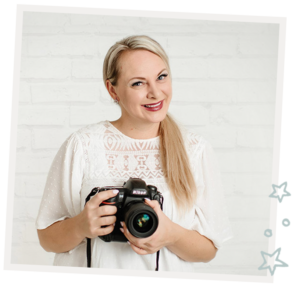
I'm
Lisa DiGeso
I’m on a mission to create uplifting online experiences for photographers ready to elevate their art, their business and their mindset.(...and have fun along the way!)















